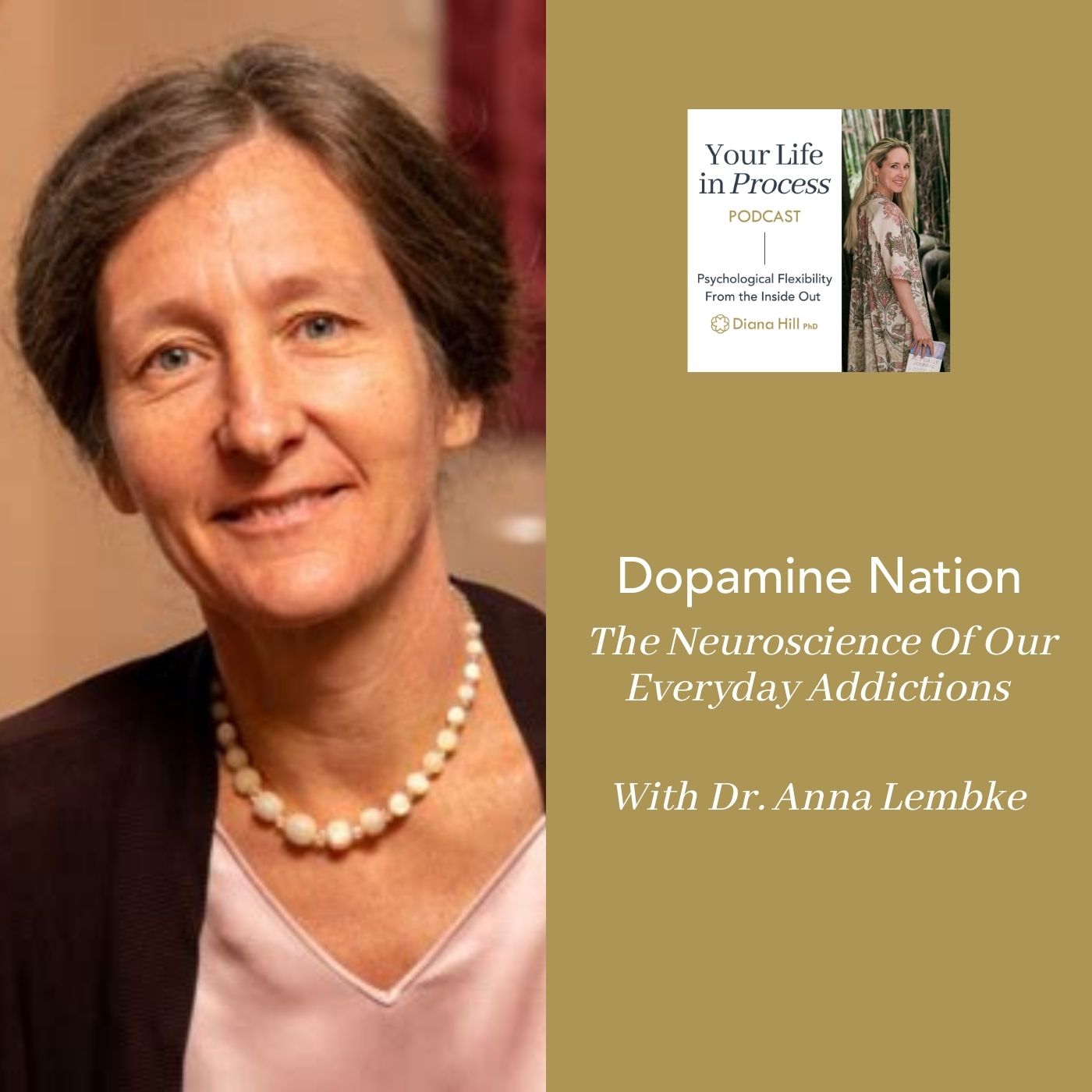Our world is increasingly designed to addict us. What is happening in our brains when we are hooked and what can we do about it? In this episode, Dr. Anna Lembke and Dr. Diana Hill explore the neuroscience of addiction, and how we’ve become addicted to everything from sex, to food, to our smartphones. Anna and Diana also share their personal experiences with addiction and effective strategies to help you get your life and your brain back into balance.
About Dr. Anna Lembke
Anna Lembke, MD is a professor of psychiatry at Stanford University School of Medicine and chief of the Stanford Addiction Medicine Dual Diagnosis Clinic. A clinician scholar, she has published more than a hundred peer-reviewed papers, book chapters, and commentaries. She sits on the board of several state and national addiction-focused organizations, has testified before various committees in the United States House of Representatives and Senate, keeps an active speaking calendar, and maintains a thriving clinical practice. She is the author of Drug Dealer, MD – How Doctors Were Duped, Patients Got Hooked, and Why It’s So Hard to Stop, recently appeared on the Netflix documentary The Social Dilemma, is her new book, Dopamine Nation: Finding Balance in the Age of Indulgence was an instant New York Times bestseller.
Key Takeaways
- There are common biological and psychosocial processes that underlie addictions
- Pain and pleasure are co-located in the brain. Pain and pleasure work on opposite sides of a balance. When we press on the pleasure side of the balance, our brain adapts by increasing the pain side of the equation. We feel awful, which then triggers us to seek out more pleasure.
- You can become addicted to any substance or behavior that releases dopamine. Most things in our modern world have been “drugified” to increase dopamine release.
- Two strategies to reset your dopamine brain balance are a 30-day detox and self-binding.
- Technology overuse at a young age can lead to kids missing out on important developmental tasks like moving their bodies, social skills, enjoying time in nature, and distress tolerance.
Related Resources
- Download Your Daily Practice for this episode
- Find out what kind of Striver you are and get your free Skillful Striving Toolkit
- Read Dopamine Nation by Anna Lembke
- Check out Diana’s Interview with Paul Bloom, author of The Sweet Spot
- Get your free ACT Daily Vision Board at drdianahill.com
- Read about Why Choosing Pain May Be a Key to a Meaningful Life
Diana’s Events
- Reserve your spot in Diana’s Reset and Restore Retreat in Costa Rica in 2023!
- Sign up for Diana’s From Striving to Thriving Summit!
- See Diana at an upcoming event
Connecting With Diana
Thank you for listening to Your Life in Process! Subscribe to the podcast for free on Apple Podcasts, Spotify, Google Podcasts. If you have any questions or feedback you can contact Diana by email podcast@yourlifeinprocess.com or leave Diana an audio message at (805) 457-2776. Follow Diana at YouTube, Instagram, LinkedIn, Facebook, and Diana’s website.
Thank you to the team Craig, Angela Stubbs, Ashley Hiatt, and Abby Diehl. Thank you to Benjamin Gould of Bell & Branch for your beautiful music.
Remember when you become psychologically flexible, you become free.
Episode Segments
- [00:00] – Introduction
- [00:28] – About Anna Lembke
- [02:44] – The Neuroscience of Addiction
- [10:29] – How Addiction Definitions Have Changed
- [14:32] – What Makes You At Greater Risk For Addiction?
- [18:48] – Are We Addicted to Productivity?
- [20:56] – How To Get Unhooked
- [25:36] – Why Give It 30 Days
- [29:28] – How Do We Prevent Technology Addiction in Kids?
- [39:11] – What Is Self-binding?
- [45:46] – Dr. Lembke’s Personal Recovery
- [49:01] – Pressing On the Pain Side with Hormesis
- [54:41] – Your Daily Practice
- [56:42] – Connect With The Podcast

+ show comments
- Hide Comments
add a comment